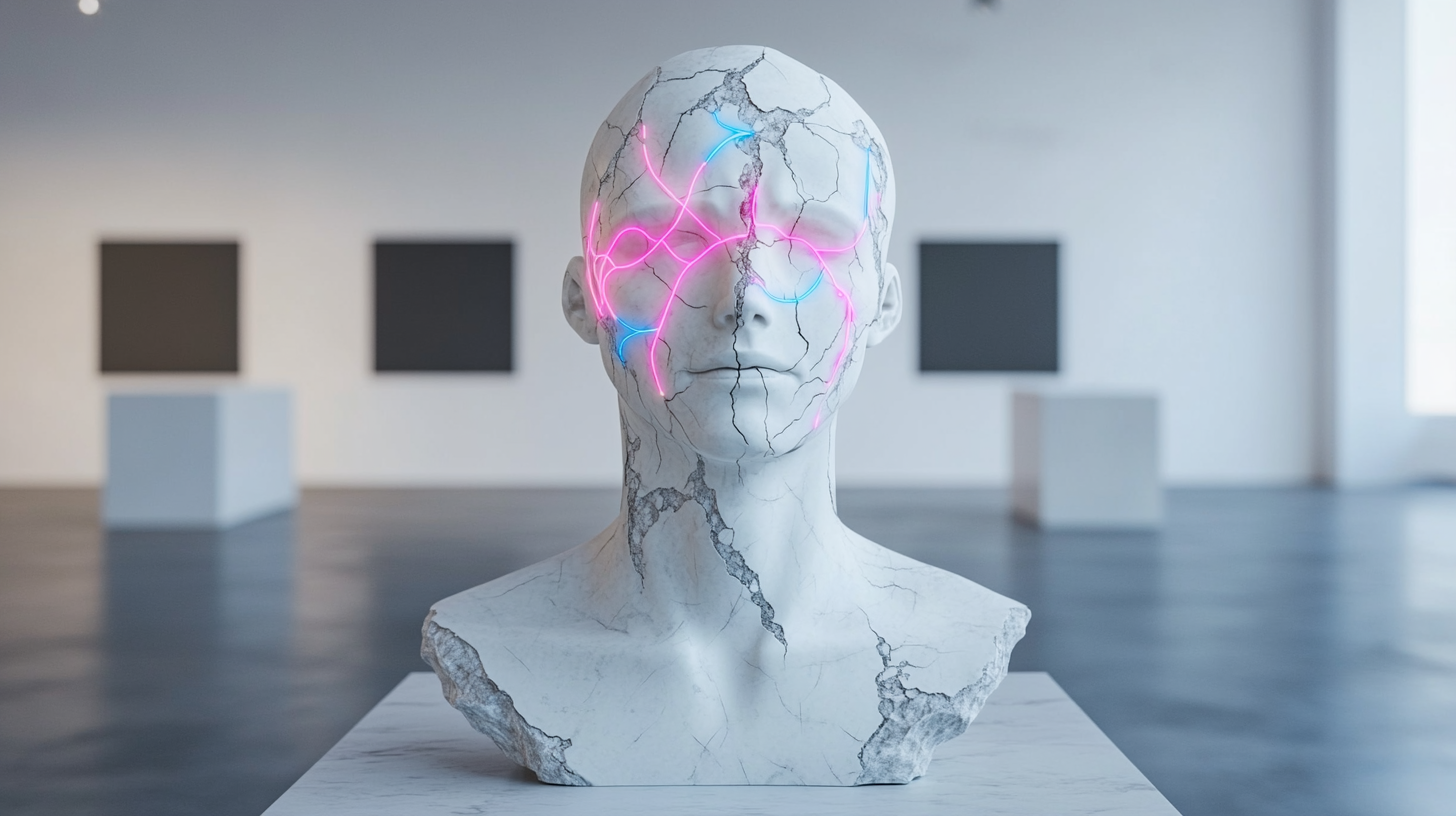Date of publication:
21 Dec. 24How to use deep learning to improve speech recognition
Have you ever wondered why sometimes a voice assistant fails to understand the simplest requests? Or why dictating text turns into a funny jumble of words? The problem lies in the fact that speech recognition is a complex challenge for technology, especially when you consider the variety of accents, speech speeds, or even background noise.
But here’s the good news: deep learning is changing the game. Imagine a voice assistant that understands you instantly, no matter the circumstances. It’s more than just technology — it’s a revolution that opens doors to better communication between humans and machines.
This isn’t magic but the work of complex neural networks that “learn” to understand language just like we do. In this article, we’ll dive into the world of deep learning, explore its mechanics, examine successful use cases, and learn how to implement these innovations in your projects.
Ready for a journey into the world of modern technology? Let’s go!
What is deep learning
Deep learning is a superpower that enables machines to think like humans. Well, almost. Imagine teaching a child to recognize words: first, you show them letters, then help them form words, and eventually, the child reads entire books aloud. Deep learning works in a similar way, but faster and without coffee.
This technology uses artificial neural networks that mimic the human brain. But it’s not just about “imitation.” Deep learning goes deeper (sorry for the pun), analyzing millions of audio files to find patterns we might not even notice. For example, this is how voice assistants understand your queries or how Netflix predicts what you want to watch.
Why does it work? Because deep learning uses a multi-layered approach. The first layer listens to sounds — similar to how you recognize the rhythm of your favorite song. The second layer analyzes those sounds: is it a human voice or the noise of a hairdryer? Subsequent layers combine everything and produce an understandable result: text, a command, or even a recommendation.
Real-life example:
Say you’re running late for a meeting and tell your phone, “Send a text: I’ll be a bit late.” Without deep learning, the phone might interpret it as, “Send trash: I’ll be a bit late” (and who knows what would happen next). Today, neural networks accurately recognize your words, even if you speak quickly or with an accent.
Mini-case:
Google implemented deep learning in its Google Translate technology, and real-time translation accuracy increased by 60%! This proves that the future belongs to neural networks, even if they don’t always understand subtle jokes.

Key components of a deep learning-based speech recognition system
To make deep learning work like a magic wand in the tech world, you need to assemble the right “alchemical” set of components. While the formula might seem complex, each element plays a crucial role.
Neural networks — the heart of the system
When you hear “neural network,” it’s not something out of this world but a complex mathematical model that works like our brain. In speech recognition, the most popular ones are RNNs (Recurrent Neural Networks) and their more advanced versions, LSTMs and GRUs. They are excellent at analyzing sequential data like speech.
However, a new hero has emerged — the Transformer. It can understand the context of an entire sentence, not just individual words. It’s like someone who “reads between the lines” and knows that “I’m fine” might mean “I’m not fine at all.”
Data processing: turning audio into numbers
The secret to any system’s success lies in clean and properly prepared data. Imagine your assistant receiving an audio file where your voice is mixed with barking dogs and a running vacuum cleaner. The system must “filter out” the noise and isolate your voice.
This is achieved through:
- Audio vectorization — converting sounds into mathematical vectors.
- Data augmentation — adding artificial noise to the data to train the system for real-world conditions.
It’s like training a person to listen to music while still hearing a phone ring.

Large language models — the brain of the system
If neural networks are the heart, then large language models (LLMs) are the brain. GPT, BERT, and their counterparts are trained on massive amounts of text and can predict the meaning of a word or entire sentence, even if it’s spoken with an accent or missing parts.
Example:
Suppose you say, “Book a table at…”. The model instantly analyzes your previous requests, the time of day, and even your location to infer: “…seven o’clock for two.” Convenient, isn’t it?
Numbers that impress:
Thanks to new components, the accuracy of recognizing noisy recordings has increased by 30% (source: Google AI Research). This means your commands will be executed correctly even in a noisy subway. Here are the key tools to implement these components:
- TensorFlow — a library for working with neural networks.
- PyTorch — an alternative with an intuitive interface.
- Librosa — a tool for working with audio.

Real-life cases: how companies use deep learning
Imagine you’re in the kitchen. Your voice assistant knows that after saying “set a timer,” you mean “15 minutes” (because you’re a fan of al dente pasta). It’s not magic but the result of deep learning, which is now penetrating every aspect of our lives. Let’s explore a few cases that demonstrate how it works in real-life scenarios.
Google speech-to-text: when accuracy becomes the standard
Google has turned speech recognition into an art. Their algorithms use deep neural networks that adapt to various languages and accents. For example, the automatic captioning feature on YouTube has been a true gift for those who better process information through text or are learning a new language.
One user shared how YouTube helped him improve his English: “I watched videos with captions and noticed how the neural network captured even the fastest phrases. Now I speak fluently with native speakers!”
Fact:
Google Speech-to-Text achieves 96% accuracy for English. This means the system can be even more attentive than your friend when you’re explaining something on the go.
Voice assistants: your new friends
Siri, Alexa, Google Assistant — these are bright examples of deep learning in action. They don’t just “hear” your words; they understand the meaning behind them. For instance, when you say, “Turn off the bedroom light,” Alexa knows it refers to a specific lamp, not the general idea of “bedroom.”
What’s new:
Amazon Alexa is now learning to detect emotions in your voice. Speaking enthusiastically? It might suggest something fun. If it senses sadness, it could play calming music.
Medicine: diagnosing via voice
Imagine your doctor listens not just to your complaints but also to your voice. Startup Vocalis Health has developed a system that analyzes speech to detect signs of illnesses — from respiratory infections to depression. For instance, changes in tone or speaking speed can signal issues you haven’t noticed yet.
Results:
In clinical trials, such systems achieve 80% accuracy in preliminary diagnoses. This not only saves time but can also save lives.
Education and inclusion: accessibility for all
Deep learning tools like Otter.ai and Ava automatically convert speech to text in real time. This is especially beneficial for people with hearing impairments. Now, lectures, meetings, and even casual conversations become accessible to everyone.
Today, these services are used not only in schools or offices but also in restaurants to simplify communication between customers and staff.
Real-life anecdote:
One Alexa user joked: “Play romantic music,” when his friend stayed over. Alexa, without hesitation, started a playlist from “Titanic.” Humorous, but right on point!

Advantages and challenges of using deep learning for speech recognition
Speech recognition based on deep learning is like a professional assistant who instantly understands what you want, even if you explain it with hints or unclear words. But let’s be honest — like any technology, it has its bright sides and shadows. Let’s dive into the details.
Advantages that win hearts
Here are the key benefits that make these systems a favorite choice for business and personal use:
- Accuracy at a magical level. Deep learning can understand speech almost as well as we do. Your accent from Zakarpattia or a mix of American slang — for the system, it’s just another task it handles effortlessly.
- Scalability — as easy as an iPhone update. These systems can be adapted for anything: from automatic podcast recording to creating a voice assistant for your store. And all of this with minimal effort.
- Inclusion for everyone. For people with hearing or speech impairments, it’s more than just convenience. It’s a chance to be heard. For example, services like Otter.ai instantly convert any conversation into text, making it accessible to everyone.

Challenges that cannot be ignored
Despite all the advantages, speech recognition technologies have their weak points, which pose challenges for developers and users. These aspects require attention and a cautious approach to ensure the systems’ effectiveness and fairness:
- Data appetite. Deep learning loves data. Not just data, but tons of high-quality audio with different accents, intonations, and even background noise. If there’s a lack of it, the system performs like a student cramming for an exam overnight — with mixed success.
- Cost factor. Implementing such systems can be expensive, especially for small businesses. Training large models requires powerful hardware or costly cloud services.
- Privacy under scrutiny. “Okay, Google, you’re not recording everything I say, right?” This question is becoming increasingly relevant. After all, training systems requires real data, which means your personal information.
- Data bias. Training on insufficiently diverse data can lead to unfair results. For example, the system may recognize male voices better than female voices or ignore less common accents.
Solutions: how to overcome the challenges
Although the challenges of implementing speech recognition technologies may seem significant, there are effective approaches to overcoming them. It’s essential to combine innovation with a responsible approach to ensure high system performance, reduce costs, and build user trust. Here are some practical solutions:
- More data, more accuracy. Use diverse sources to train the models.
- Cost optimization. Cloud services like AWS or Google Cloud can help reduce expenses.
- Transparency and ethics. Let users understand how their data will be used. This builds trust and minimizes the risk of conflicts.
How does this relate to you?
For example, you’re launching a startup with a voice assistant. Using deep learning can give you a competitive advantage. But remember: plan every step to avoid the trap of high costs or ethical issues.

How to start implementing deep learning in your project
So, you’re ready to dive into the world of deep learning and build your own speech recognition system? It’s like constructing a modern skyscraper: you need a solid foundation, quality materials, and reliable tools. Let’s break it down step by step to make it effective.
Step 1: Define goals and objectives
Before starting, ask yourself: what exactly should your system do? For example:
- Convert audio to text for document preparation.
- Create a voice assistant to help clients 24/7.
- Analyze phone conversations to improve service quality.
Clearly defined goals will help avoid unnecessary expenses and make your project as efficient as possible.
Step 2: Prepare the data
Data is the fuel for your system. The more quality “fuel” you have, the farther it will go.
- Record real audio files. They should include diverse accents, intonations, and background noise.
- Clean the data. Remove unnecessary noise, trim pauses, and split audio into shorter segments.
- Add augmentation. For example, artificially create variations of recordings with background noise or different speech speeds.
Step 3: Choose tools and frameworks
Today, there are many platforms for working with deep learning. Here are the most popular ones:
- TensorFlow. Ideal for working with large models.
- PyTorch. Easy to use and particularly popular among researchers.
- Hugging Face. A great choice for working with pre-trained language models.
Tip: if you’re a beginner, start with cloud platforms like Google Cloud or AWS. They offer ready-made solutions for speech recognition.
Step 4: Training and testing
Training neural networks is like training an athlete. You need a balance between model complexity and accuracy.
- Train the model on diverse datasets. This will make it more adaptable.
- Test on real scenarios. For example, check how the system recognizes speech in a noisy office or during fast-paced conversations.
Interesting statistic: models that undergo multi-stage testing improve their accuracy by 20–30%.
Step 5: Deployment and monitoring
Once the system is ready, deploy it into your business. But remember, this is just the beginning. Regularly update the model, add new data, and analyze its performance.
Example:
Imagine your voice assistant starts struggling with seasonal queries (e.g., booking New Year’s events). Adding relevant data will make it accurate and useful again.
Real case:
A company developing a system for transcribing court proceedings faced a problem: the system didn’t understand legal terms. By adding court speech recordings to the training data, they increased recognition accuracy from 70% to 92%.

Conclusion: the future of speech recognition technologies
Deep learning in speech recognition is like a professional orchestra that always plays without missing a note. It is already expanding the horizons of our capabilities: we speak — we are heard, we write — we are understood. But the true potential of this technology is just beginning to unfold.
What have neural networks done for us?
- They transformed complex audio signals into comprehensible text with accuracy that previously only professionals could achieve.
- They provided businesses with automation tools that increase efficiency and reduce costs.
- They opened doors to inclusion, helping people with hearing or speech impairments become part of the digital world.
But this is just the beginning. Technologies evolve, and the possibilities that seemed like science fiction yesterday will become routine tomorrow.
Why is this important to you?
If you are an entrepreneur, think about how speech recognition systems can improve your business. Voice assistants, automatic translation, meeting transcription — these are not just trends; they are your new competitive advantages.
Real story:
The company Keycall developed a voice bot capable of recognizing client speech and engaging in dialogue, clarifying information, conducting quality surveys, handling objections, and informing about new promotions. This bot can make up to 12,000 calls per hour, recognizing 98% of client speech, significantly improving interaction efficiency.
Question for you:
How do you imagine using this technology in your life or business? Reach out to experts who can help make your project successful.
Now it’s your turn. Words are already turning into actions, and it’s up to you to decide whether you’ll become a leader in a world where voice matters.



